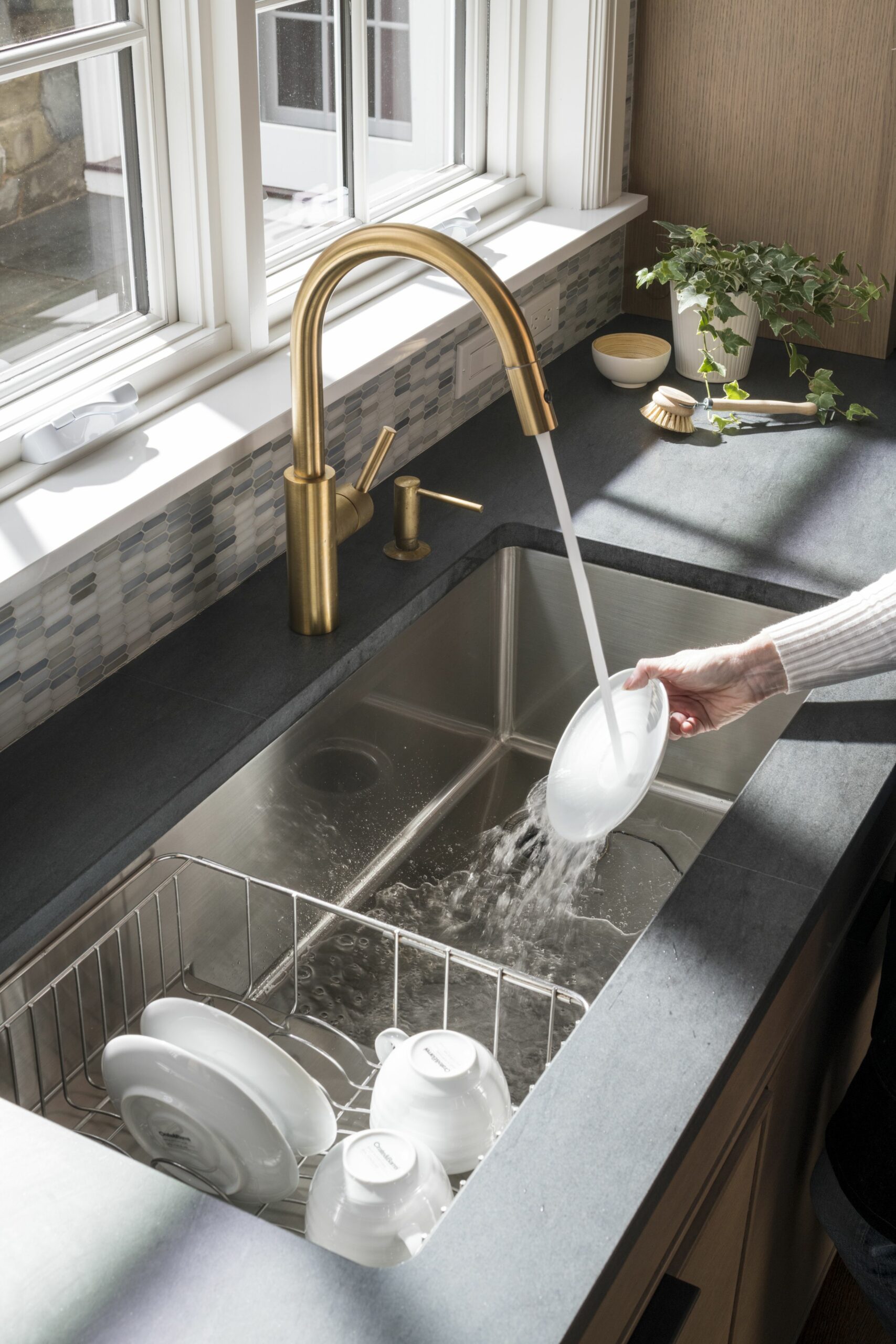The standard height for a kitchen sink is an essential consideration when designing or renovating a kitchen. The height of the sink plays a significant role in determining the overall comfort and functionality of the kitchen workspace. Typically, the standard height for a kitchen sink is around 36 inches from the floor to the top of the countertop. This height is considered to be ergonomically optimal for most individuals, as it allows for comfortable and efficient use of the sink while standing.
The standard height of 36 inches is based on ergonomic principles and is designed to accommodate the average height of adult users. This height allows for easy access to the sink for tasks such as washing dishes, preparing food, and cleaning vegetables. It also ensures that the sink is at a comfortable height for users to stand and work without straining their backs or shoulders.
In addition to the standard height of the sink itself, it’s essential to consider the depth of the sink bowl when determining the overall functionality of the kitchen sink. The depth of the sink bowl can vary depending on personal preference and specific needs. However, a depth of around 8 to 10 inches is commonly recommended, as it provides ample space for washing dishes and performing other kitchen tasks comfortably.

When designing a kitchen layout, it’s important to ensure that the sink is installed at the appropriate height relative to other kitchen fixtures and appliances. For example, the sink should be positioned at a comfortable height to the countertop, cabinets, and dishwasher to facilitate smooth workflow and efficient use of the kitchen space.
In some cases, homeowners may choose to deviate from the standard height for a kitchen sink based on personal preference or specific needs. For example, individuals with mobility issues may require a lower sink height to accommodate seated use, while taller individuals may prefer a slightly higher sink height for improved ergonomics. However, it’s essential to consider the overall functionality and accessibility of the sink when deviating from the standard height.

Common Mistakes to Avoid:
Incorrect Measurement: One common mistake when determining the height of a kitchen sink is failing to measure accurately. It’s essential to take precise measurements of the space and consider factors such as the height of the countertop, cabinets, and other fixtures to ensure that the sink is installed at the correct height.
Ignoring Ergonomics: Another common mistake is ignoring ergonomic principles when determining the height of the kitchen sink. Failing to consider the comfort and accessibility of the sink for users of varying heights can result in an uncomfortable and inefficient workspace.
Improper Installation: Improper installation of the sink can also impact its height and functionality. It’s essential to follow manufacturer guidelines and consult with a professional installer to ensure that the sink is installed correctly and securely at the appropriate height.
Neglecting Workflow: Neglecting to consider the overall workflow and functionality of the kitchen when determining the height of the sink can lead to inefficiencies and discomfort during everyday use. It’s important to plan the layout of the kitchen carefully to ensure that the sink is positioned at a convenient height relative to other fixtures and appliances.
Overlooking Customization Options: Overlooking customization options for the sink height can also be a mistake. Many manufacturers offer adjustable or customizable sink heights to accommodate individual preferences and specific needs. It’s essential to explore these options to find the best fit for your kitchen space.

What is the standard height for a kitchen sink?
The standard height for a kitchen sink is typically around 36 inches from the floor to the top of the countertop.
Can the height of a kitchen sink be adjusted?
Yes, many manufacturers offer adjustable or customizable sink heights to accommodate individual preferences and specific needs.
How do I determine the appropriate height for my kitchen sink?
To determine the appropriate height for your kitchen sink, consider factors such as the height of the countertop, cabinets, and other fixtures, as well as ergonomic principles for comfortable use.
Are there any height requirements for accessible kitchen sinks?
Accessible kitchen sinks may have specific height requirements to accommodate individuals with mobility issues. These requirements may vary depending on local building codes and accessibility guidelines.
Can I install a kitchen sink at a different height than the standard?
Yes, you can install a kitchen sink at a different height than the standard based on personal preference or specific needs. However, it’s essential to consider the overall functionality and accessibility of the sink when deviating from the standard height.

Simple Standard Size Kitchen Sink Placement – Get in The Trailer

Kitchen Sink Dimensions – Dimensions Info

Standard Size of Kitchen Sink.

Determine your size for kitchen sinks

Kitchen sink height standard

American Standard Townsend 29.25″ Tall Ceramic Rectangular Pedestal Bathroom Sink with Overflow

Ideal height for kitchen sink

Kitchen Cabinet Height

Patent US3774631 – Prefabricated modular rough plumbing – Google Patents

Related Posts:
- Contemporary Stainless Steel Kitchen Sinks
- Sterling Kitchen Sink Clips
- Kitchen Sinks Corner Style
- Kohler Kitchen Sink Faucet Repair
- Kitchen Sink Faucet Replacement Parts
- Old Farm Kitchen Sink
- 33 Inch Kitchen Sink Base Cabinet
- What To Do If Your Kitchen Sink Is Clogged
- Everything Bar The Kitchen Sink
- Old Kitchen Sink Ideas